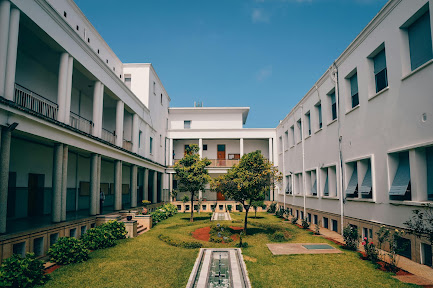GOVERNMENT POLICIES SHAPING EDUCATION TRANSFORMATION IN KENYA
BY JOEL KAVILWA
Government Policies Shaping Education Transformation
With IT advancements and changing cultural needs, all aspects of education are evolving globally, from physical classrooms to eLearning. This transition has been accelerated by conscious government efforts to reform the education system of Kenya into a twenty-first-century or knowledge-based system. From the adaptation of the curriculum to the integration of digital resources, Kenya’s educational transformations illustrate how purposeful policymaking might reshape learning outcomes, address disparities, and prepare students for the rapidly evolving world around them. Building on earlier essays examining the current state of schooling in Kenya, the challenges of infrastructure and fairness within, and, increasingly, the role of development policy, here I argue that government policies themselves, particularly the Competency-Based Curriculum (CBC), integration of ICT, reforms to teacher training, and international partnerships, have played a critical role in pushing change within Kenya’s education system to the forefront of its national agenda.
The
Competency-Based Curriculum: A Basis for Modernization
The Competency-Based Curriculum (CBC), which Kenya adopted in 2017, marked a complete change from its traditional examination-led education methods from the previous decades. The CBC follows worldwide educational practices focusing on competency instead of memorization to develop critical thinking together with creative abilities and useful skills. Through the CBC Structural Progress, Grade 9 pupils were permitted to continue their studies in primary schools until 2025 for cognitive and emotional preparedness. Students will enjoy a full learning experience because the government is demonstrating its commitment to this fundamental education reform. The system is based on Piaget's stages of cognitive development and other theoretical frameworks.
The CBC integrates embedding vocational training at
junior secondary level such that it leads to awarding of academic
qualifications alongside acquiring technical competence. The Kenya Vision 2030
national development framework selects the program as its anchoring program in
an attempt to align academic education in the market demand as well as the
insecurity of employment of youths. Uncertainty of the master curriculum plan
coupled with excessive development of new secondary schools unsettles parents
with the program. Also, the reform is tainted with habitual logistics problems.
The CBC bears witness to Kenya's total devotion to improved student welfare
through up-to-date development with comprehensive education despite its long
list of issues in implementation.
Digital
Literacy and ICT Integration: Bridging the Technological Divide
The Kenya Institute of Curriculum Development (KICD)
serves as the leader for updating digital literacy status into a core skill
across every 2025 curriculum subject in Kenyan educational institutions. Every
stage of curriculum now uses technology because the goal consists of developing
necessary 21st-century abilities. The 2021 Policy on Information and
Communication Technology in Education and Training backing from the Kenyan government
enforces ICT incorporation from classrooms to teacher training programs.
GPE’s funding of the National Education Management
Information System (NEMIS) enabled Kenya to implement real-time tracking of
enrollment numbers and resource distribution together with attendance data. The
digital gap remains significant because remote learning instruments were
missing from more than half of the student population when schools went remote
during the COVID-19 pandemic. Millions of digitized textbooks went out to
schools alongside the LEGO Foundation’s support to build up eLearning systems
across the country. Kenya maintains parallel commitments between technological
innovation and fair distribution of opportunities, with rural and
poverty-stricken areas proceeding at a slower pace than urban locations.
Teacher
Training and Capacity Building
The education reforms of Kenya fundamentally depend
on the competency of teachers. The World Bank shows that mathematics
instructional training for 102,000 teachers produced
improved student numeracy scores, resulting in a 2.4% increase in proficient
students from 79.1% to 81.5% between 2016 and 2021. The National Teacher
Performance Appraisal and Development (TPAD) system started in 4,000 schools
before becoming nationwide by providing continuous professional development,
which connected evaluation results to learning outcomes in classrooms.
The CBC has revealed that teachers across different stages of implementation do not have sufficient preparation. School teachers at the primary level must now handle junior secondary subject matter even though specialists at high schools traditionally deliver this content. To solve this issue, the government has placed "refresher training" programs and has established collaborations with civil society organizations that target upgrading teacher skills regarding CBC approaches. The government emphasizes that effective curriculum changes require financial investment to develop teachers' capabilities as separate entities.
Partnerships
and Equity-Driven Policies
Kenya has achieved greater success in its education
reforms through its international cooperative initiatives. The GPE's $88.4
million grant from 2015 to 2022 funded textbook distribution, sanitation
improvements, and gender equality programs in elementary education, thus
achieving gender balance in student enrollment. The World Bank’s Public Expenditure
Review documented that Kenya invested 5.3% of its GDP in education in 2018 as a
core element driving better education outcomes, yet it did not resolve
geographical differences between regions.
The Sector Policy for Learners with Disabilities serves
as evidence of the government's dedication to marginalized communities by
establishing accessible books for visually and hearing-impaired students. The
2025 Re-Imagine Education initiative works to build relationships between
education institutions and businesses for curricular development, which will
generate graduates with skills suited to the digital Kenyan economy.
Equity-oriented policies work towards making education exist as a universal
public resource that unites economic classes.
Challenges
and the Path Forward
The systemic obstacles prevent Kenya from fully
benefiting from its education transformation efforts. The educational time span
ranges from 6.5 learning-adjusted years in Turkana’s arid territories to 12
years in Nairobi schools. The CBC will succeed only when the nation resolves
capacity issues that include overloaded primary schools unable to take Grade 9
students.
Policymakers who want to extend their progress must
address two key local challenges by moving teachers to under resourced areas
and establishing rural schools with digital capabilities. Educational funding
prospects look good because the government plans to consolidate finances over
the next year despite predicting GDP growth at 5.2% in 2023–24. Historical
material excluded from Kenyan school curricula deprives students of capacity to
solve structural social issues, Brookings experts state. Future education
reforms must accomplish balanced development between technical progress and
teaching civic education in order to create actively involved moral learners.
Conclusion
Kenya's education system is proof that government
policies possess the revolutionizing power to change learning techniques in
education. The reforms fill the gap between the current education practice and
prospective world trends through the adoption of targeted CBC student-centered
teaching practices and computer-based learning platforms. Through their
data-driven partnerships, Kenya has set an example for other countries to
follow in transforming students from traditional classrooms to eLearning in
spite of the dominating disparities in resources. To enable it to achieve an
education system that prepares all learners, the country must prioritize
continued investment in teacher capacity, digital infrastructure, and inclusive
policy within the umbrella of Vision 2030.
References
Education
system change: Perspectives from Kenya. (2022, March 9). Brookings Institution.
Retrieved April 20, 2025, from
https://www.brookings.edu/opinions/education-system-change-perspectives-from-kenya/
Kenya
launches ‘Re-Imagine Education 2025’ initiative to transform learning systems
for 21st century economy. (2025, February 8). NAM News Network. Retrieved April
20, 2025, from http://www.namnewsnetwork.org/?p=291776
Kenya:
Investing in education for a better future. (2023, March). Global Partnership
for Education. Retrieved April 20, 2025, from
https://www.globalpartnership.org/results/country-journeys/kenya-investing-education-better-future
Kenya's
2025 School Year Without Form Ones: Questions and Opportunities in the CBC Era.
(n.d.). LinkedIn. Retrieved April 20, 2025, from
https://www.linkedin.com/pulse/kenyas-2025-school-year-without-form-ones-questions-cbc-shikanga-ykbof
Lessons
from Kenya’s Education Reforms. (2022, June 21). World Bank. Retrieved April
20, 2025, from
https://www.worldbank.org/en/country/kenya/publication/lessons-from-kenya-s-education-reforms
Policies.
(n.d.). Ministry of Education - Kenya. Retrieved April 20, 2025, from
https://www.education.go.ke/policies-0
The
Kenya Education Situation in January 2025: Navigating the Transition of the CBC
System and Using Adaptive M&E to Manage Transitions. (n.d.). LinkedIn.
Retrieved April 20, 2025, from
https://www.linkedin.com/pulse/kenya-education-situation-january-2025-navigating-cbc-byron-wayodi-flttf
The
Politics of Teaching Conflict: Memory and Education in Kenya. (2025, March 6).
PRIF Blog. Retrieved April 20, 2025, from
https://blog.prif.org/2025/03/06/the-politics-of-teaching-conflict-memory-and-education-in-kenya/
Understanding
the 2025 KICD Curriculum Changes in Kenya. (n.d.). CBC App. Retrieved April 20,
2025, from
https://cbcapp.co.ke/understanding-the-2025-kicd-curriculum-changes-in-kenya-a-guide-for-educators-and-stakeholders/







The CBC's emphasis on learner-centered education is for sure a significant feature. students can learn at their own speed and interact with material that plays to their interests and skills thanks to the curriculum's support for tailored learning. This individualized approach encourages students to explore their potential in a variety of sectors, including the arts, sciences, and sports, while also meeting their different needs. In order to foster responsible and involved citizenry, the curriculum also places a strong emphasis on the development of social, emotional, and ethical values.
ReplyDeleteThis is incredible
ReplyDeleteIt's indeed true that the government is really trying to adjust with the CBC system but it will take a while and lots of effort for the CBC to be a permanent system in Kenya
ReplyDelete